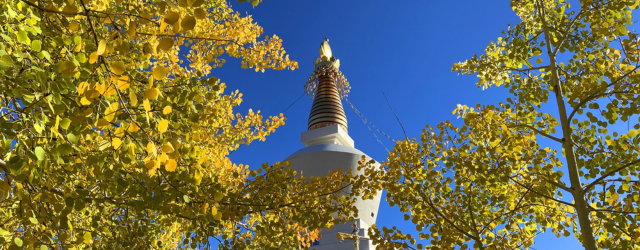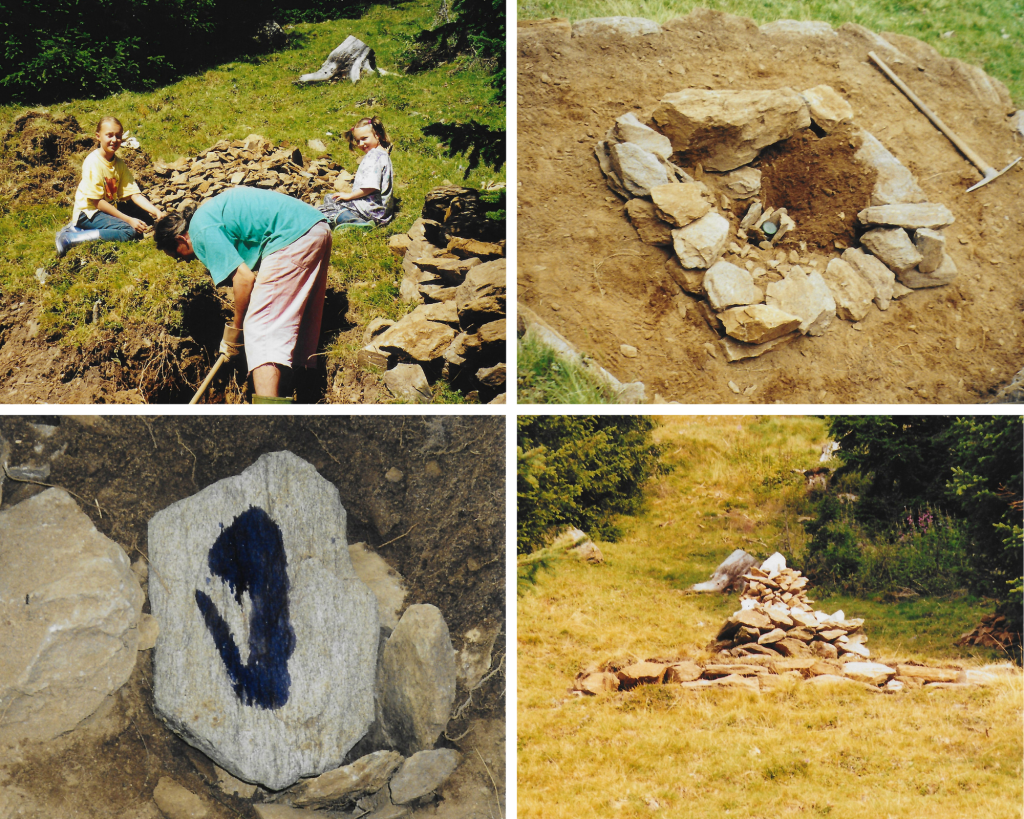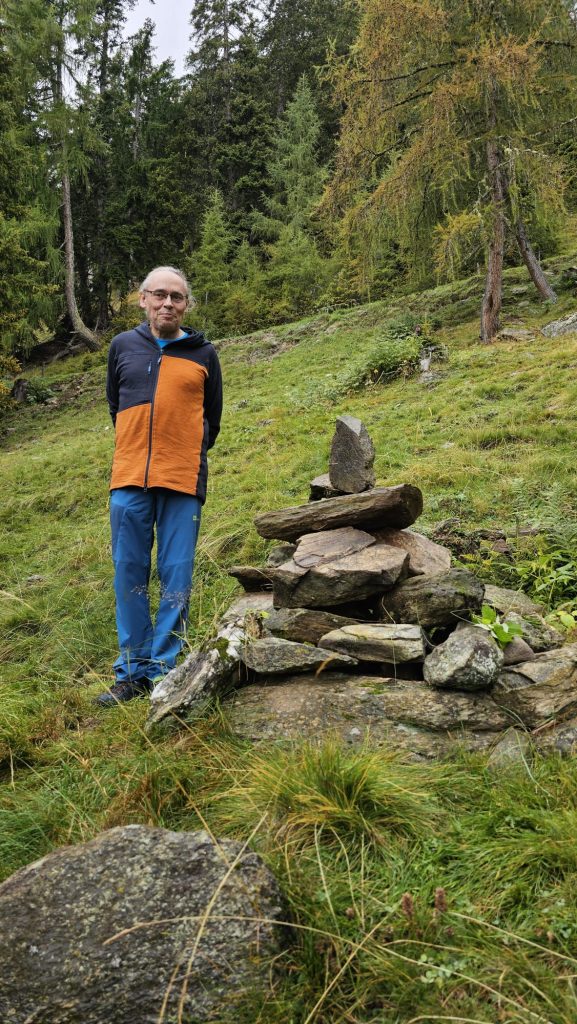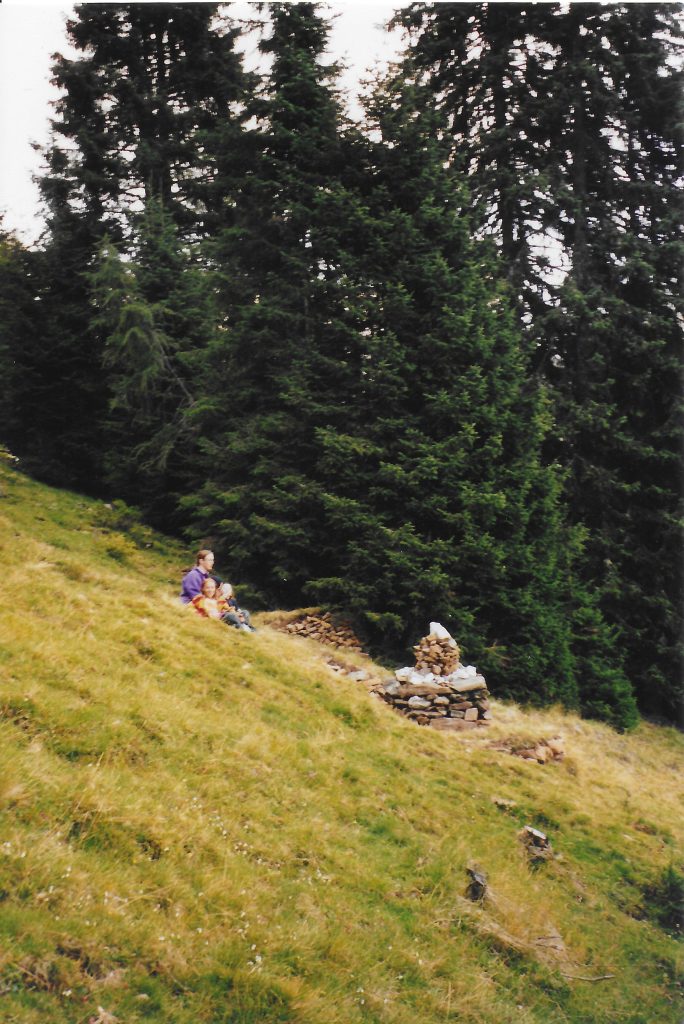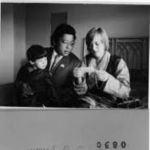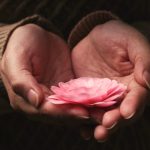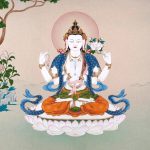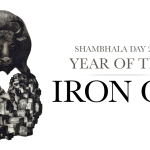Tuesday
An Austrian Offspring of the Great Stupa of Dharmakaya
By Peter Nowak
It is said that a stupa would have unseen impact on our world and inspire future generations of practitioners. This story, coming from as far as Austria, is a little example of the radiation of “The Great Stupa of Dharmakaya Which Liberates Upon Seeing” in Drala Mountain Centre.
Last May, the Board of Shambhala Global held a retreat at Drala Mountain Centre. During this retreat, we had a magical visit to the Stupa with Dale Asrael giving teachings and the Board together with the Stupa team breaking ground for the construction of the new Stupa Visitors Centre. At this occasion, I was reminded of this little story when my second daughter requested me to build a stupa in the Austrian/Italian mountains.
We, my three small kids and my first wife, had been at Rocky Mountain Dharma Centre for a month-long Vajrayana program in 1999. We all were very impressed by the Stupa still under construction. At that time, the “life pole” of the Stupa was finalized. So, two years later I went there again, together with my six-year-old son, to take part in the consecration ceremony for the Stupa.
When we came back to Austria touched by the magic of the Stupa, my eight-year-old daughter urged us to also build a Stupa near our beloved mountain hut at the Austrian-Italian border high in the mountains. Of course, we followed the command of my daughter and constructed this little Stupa with the stones from the surrounding mountain slope. We tried to follow the basic form, put an Ashe in the foundation, a “life pole” wrapped with the Vajrasattva-Mantra, and a white quartz stone as the top. With a little imagination, it looked like Mount Kailash. We consecrated it with a Lhasang and offered incense in a circumambulation at the beginning of September 2001. See a little documentation below.
It was expected that our little stupa would not remain for a thousand years or longer like The Great Stupa of Dharmakaya Which Liberates Upon Seeing. But last fall, 23 years later, I was there again. It was still standing! It needed a little bit of renovation, the quartz stones were gone, but it was still there. Of course, I had to document this as well.
May the Great Stupa in Colorado and the little stupa in the Alps bring liberation and happiness to future generations!
Peter Nowak first met Chögyam Trungpa Rinpoche in 1985 and attended the last three-month seminar Trungpa taught in 1986. He has three adult children, worked for 35 years in health system reform and was teaching at several universities in Austria. By developing strategic initiatives in close collaboration with the Austrian Ministry of Health, he had a rich training ground for creating an enlightened society – with and without success. He had many roles in his home Shambhala Center in Vienna, has been a meditation teacher since 1986, was on the Board of Shambhala Global from 2020 to 2024 and during this time also part of the Shambhala Europe Advisory Board. Only in recent years has he started to teach more in Shambhala.
Entries filed under Editorial Staff
The Boundary Issue – HIGHLIGHT
By Joseph Pascutazz There’s a lot that goes into making your solitary retreat a seamless container… Spacious as it is, Karmê Chöling is a tightly knit community. We mind each other’s business. Boundary issues abound. In a good way, I think, as in: “The boundaries are dissolving.” The walls here are paper thin and seemingly transparent. ... continuePosted May 22, 2025 by Jillian_Johnson
Out of the Frying Pan and into the Court – HIGHLIGHT
A Conversation with Diana Mukpo about Shambhala Household In a world that often feels chaotic and overwhelming, finding the opportunity to incorporate meditative practices into our daily lives and homes has taken on a new importance. Today, we sit down with Diana Mukpo, wife of the late ... continuePosted April 9, 2025 by Jillian_Johnson
Fall Gracefully 優雅に落ちる – HIGHLIGHT
By David Takahashi Is there Gravity, or Does the Earth Suck? The phrase “yuuga ni ochiru” (優雅に落ちる) in Japanese translates to “gracefully falling” or “elegantly descending” in English. It combines the word “yuuga” (優雅), meaning “graceful” or “elegant,” with the verb “ochiru” (落ちる), which means “to fall” or ... continuePosted October 18, 2024 by Jillian_Johnson
Meditation for Self-Love: Teachings, Videos, and Guided Meditation Script – HIGHLIGHT
By Frederick Meyer Shambhala Blog Article, August 9, 2024 Self-love—to feel, honor, and appreciate our own goodness—is among the most beautiful and powerful things there is. We are always worthy of self-love, but because of the difficulties of life, we may struggle to find it. Fortunately, meditation can ... continuePosted August 16, 2024 by Jillian_Johnson
Meeting Chenrezig in Sound: Understanding Chenrezig’s Name and the Meaning of the Chenrezig Mantra – HIGHLIGHT
by Frederick Meyer An excerpt from the Shambhala Online Blog posted April 12, 2024 In recent years, Chenrezig—the Tibetan name for the Buddhist deity Avalokiteshvara, the Bodhisattva of compassion—has become an important part of my spiritual practice. I have a strong affinity for sound, and much of my ... continuePosted April 23, 2024 by Jillian_Johnson
Gratitude for Human Resource – HIGHLIGHT
An Excerpt from the March 2024 Shambhala Touching the Earth Collective Newsletter by Irene Woodard There is a group of us in the Collective studying Joanna Macy’s Active Hope. And the start of her spiral is gratitude. And so this is coming from that place, where someone has been so important ... continuePosted March 21, 2024 by Jillian_Johnson
Buddhism and Psychedelics: A Practitioner’s Personal Experiences and Reflections – HIGHLIGHT
By Frederick Meyer Buddhism and psychedelics have a long and mixed history in the West. Overall, the question of how psychedelics and Buddhism mix—and how, when, and whether these experiences benefit the practitioner’s Buddhist and spiritual path—remains a lively one. I am a lifelong Buddhist practitioner, and beginning ... continuePosted November 3, 2023 by Jillian_Johnson
“As You Wish”: The Princess Bride on Service and Basic Goodness
by Frederick Meyer The video below traces a thread in the classic movie The Princess Bride: the phrase “As you wish,” as code for “I love you.” Spoiler alert! The video is the first two minutes and the final minute of arguably one of the best movies of all ... continuePosted September 19, 2023 by Jillian_Johnson
Shambhala Touching the Earth Collective – Water Rabbit Year: The Big View – HIGHLIGHT
By Irene Woodard An Excerpt from the Touching the Earth Collective February 2023 Newsletter I love this painting and I love the title, Big View There was no need to look for an image for the new year. Jeff Wigman painted this in 2022 and showed it in his one-man ... continuePosted February 7, 2023 by Jillian_Johnson
How to Watch the Shambhala Day Broadcast – HIGHLIGHT
Cheerful Shambhala Day! We are updating this article to include the link to watch the broadcast, if you missed it live. Link to the broad cast in English is below, if you need help with translation, please contact: [email protected] Watch Shambhala Day 2021: Year of the Iron ... continuePosted February 17, 2021 by archives-staff
Shambhala Day Info: Year of the Iron Ox! – HIGHLIGHT
From the Editorial Team: This article is an invitation to the live broadcast of Shambhala Day 2021: The Year of the Iron Ox, and contains information about many other Shambhala New Year gatherings and events. Shambhala Day Live Broadcast This year Shambhala Day is on Friday, February 12. ... continuePosted January 20, 2021 by archives-staff
A Nourishing Harvest of Peace Gathering – HIGHLIGHT
Harvest of Peace is one of four annual Nyida Day celebrations in Shambhala culture. Each of these holidays mark the changing of the seasons, hence the name Nyida Day (Nyi = sun and Da = moon). This seasonal transition, the autumn equinox in the northern hemisphere ... continuePosted September 21, 2020 by archives-staff
Pausing our Schedule, Resources for our Readers – HIGHLIGHT
Dear Shambhala Times readers, In response to yet another instance of violence against Black Americans, the Times Editorial staff has paused our scheduled editorial calendar for the moment, and want to begin by amplifying BIPOC (Black, Indigenous, People of Color) voices, particularly BIPOC dharma teachers, doing work ... continuePosted June 4, 2020 by archives-staff
COVID-19 Resources on the Shambhala Times – HIGHLIGHT
From the Editorial Team— Many resources have been shared by the Shambhala leadership and Community members to help us all through this moment of isolation and uncertainty. Your editorial team has gathered them together here so that this page can be a resource for everyone. We will ... continuePosted April 2, 2020 by archives-staff
Día de Shambhala 2019
Queridos amigos: Mañana, 5 de febrero es el día de Shambhala 2019 y daremos la bienvenida al año del cerdo de la tierra. Ahora más que nunca nos parece importante reunirnos como comunidad y apoyarnos de forma auténtica, terrenal y real. Esperamos que la retransmisión del día ... continuePosted February 7, 2019 by luz_rodriguez
![]() RSS feed for the Editorial Staff category
RSS feed for the Editorial Staff category
View all posts from authors in Editorial Staff: jillian_johnson

